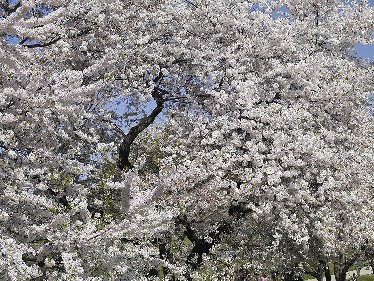Carol Highsmith, a distinguished and widely published American photographer, is donating her life's work to the Library of Congress. The Carol M. Highsmith archive at the Library of Congress includes photos from all over the United States. Find more Carol Highsmith photos on PhotographsAmerica.com.

- Tokyo Mayor Yukio Ozaki gave the city of Washington, D.C., a gift of 3,000 cherry trees in 1912 to recognize the friendship between Japan and the United States. The annual National Cherry Blossom Festival commemorates this occasion. Pictured is the Japanese embassy in Washington, D.C.

- First Lady Helen Herron Taft and Viscountess Chinda, wife of the Japanese Ambassador, planted the first two trees in 1912.

- Two varieties of cherry tree have become predominant since 1912, the Yoshino Cherry and the Kwanzan Cherry. Single white blossoms distinguish the Yoshino Cherry, while double blossoms of almost clear pink are produced by the Kwanzan Cherry.

- The cherry trees bloom each year from late March to early April. The earliest recorded blooming date was March 15, 1990. The latest recorded date was April 18, 1958.

- Four cherry trees were vandalized on December 11, 1941. It was speculated that the trees were cut down in retaliation for the Japanese attack on Pearl Harbor. Hoping to prevent future vandalism, the trees were renamed "Oriental" flowering cherries for the duration of World War II.

- First Lady "Lady Bird" Johnson accepted an additional 3,800 trees in 1965.

- Cuttings from a famous 1,500-year-old Japanese cherry tree in Gifu Province, Japan, were planted in 1999 in the Tidal Basin.

- In addition to the Yoshino and Kwanzan Cherry trees, other varieties can also be found around DC. They include: Akebono, Weeping Japanese, Takesimensis, Usuzumi, Okame, Shirofugen, Fugenzo, Sargent, and Autumn Flowering Cherry.














